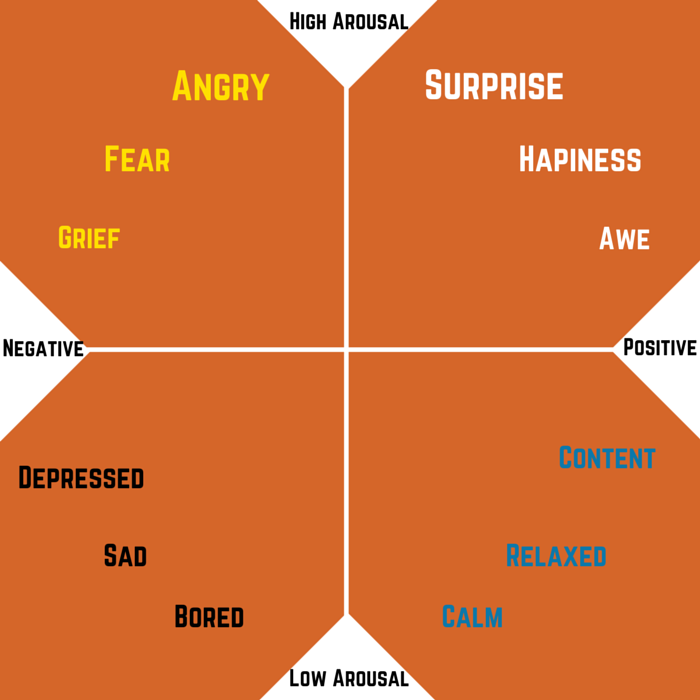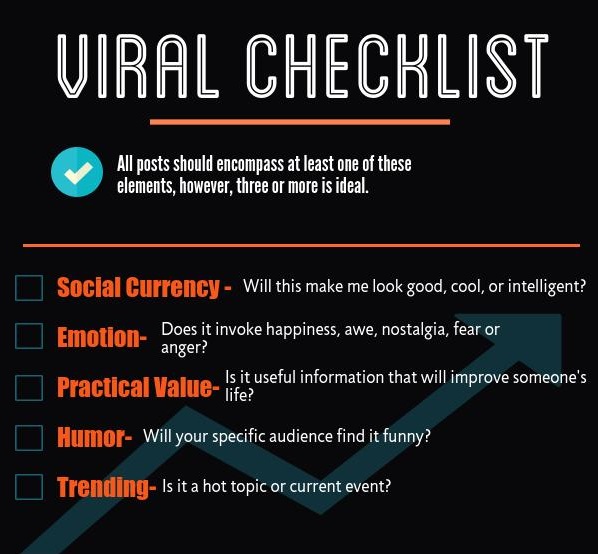What makes content go viral?
In past years, the virality of content and products was thought to be nothing more than luck, but new research shows luck has little to do with content going viral. There are key elements that all viral content has in common that enhances its shareability. Here you’ll discover these elusive viral ingredients that shape compelling content that’s designed to be highly engaging and shareable.
Social Currency
People consciously and subconsciously evaluate how content will make them appear to other people before deciding to share. Will this make me look intelligent, cool, or special? People want to appear valuable and in-the-know when sharing articles with their friends. Make sure your content reflects well on the reader and worthy of sharing with their friends.
Emotion
All viral content invokes high-arousal emotions in the reader. The emotion needs to be a strong positive or negative emotion otherwise your content will struggle to get any attention, and is even less likely to get shared. High-arousal emotions include awe, happiness, surprise, anger, fear, and lust.

BuzzFeed’s article “21 Pictures That Will Restore Your Faith In Humanity” is a perfect example of high-arousal emotions driving content to go viral. This article triggered strong emotions of awe, surprise, and joy. This article received 13.3 million views by focusing on the powerful emotional responses of its readers.
Practical Value
People love articles that provide them with valuable and practical information that can make their lives better or easier. Practical value articles receive high engagement rates and are highly shareable pieces of content, because of social currency. Sharing useful articles, such as ways to save money, eat healthier, or become a more successful person, with friends makes people look intelligent and caring. Aim to make people’s lives better and the virality of your content will naturally follow.
Trending
When deciding on a topic to write about it’s important to evaluate what topics are trending. A well written article focused on high-arousal emotions can still fall flat if people are not currently interested in the topic. Use tools like Google Trends, Quora, and BuzzSumo to evaluate what’s already trending and what topics are building steam. Writing an article about Thanksgiving in June isn’t going to get you anywhere. Take the time to research what’s popular right now and in the near future in your specific community.
Humor
Not everything that goes viral is funny, but humor can definitely help out. In a research study conducted by Ipsos, the world’s third largest market and opinion research firm, found that humorous content made up 43% of the content “online sharers” choose to share on social media sites. Producing funny content can be a great way to increase the likelihood of people engaging with your content and driving it to go viral.
Humor seems like the easy answer to virality, but it can be the hardest of all the viral ingredients to implement effectively. What readers find funny can be drastically different between people. It’s important to understand your audience and their personalities thoroughly, and never assume that because you find something funny it means everyone does as well. You don’t want to be the comedian telling jokes to an uncomfortably silent room. It would do you much more harm than good.
Here you have the five secret ingredients to prime your content for viral success. Now go write compelling emotional content that people just can’t help but share with their friends, and watch the views tick away toward the virtual sky.

